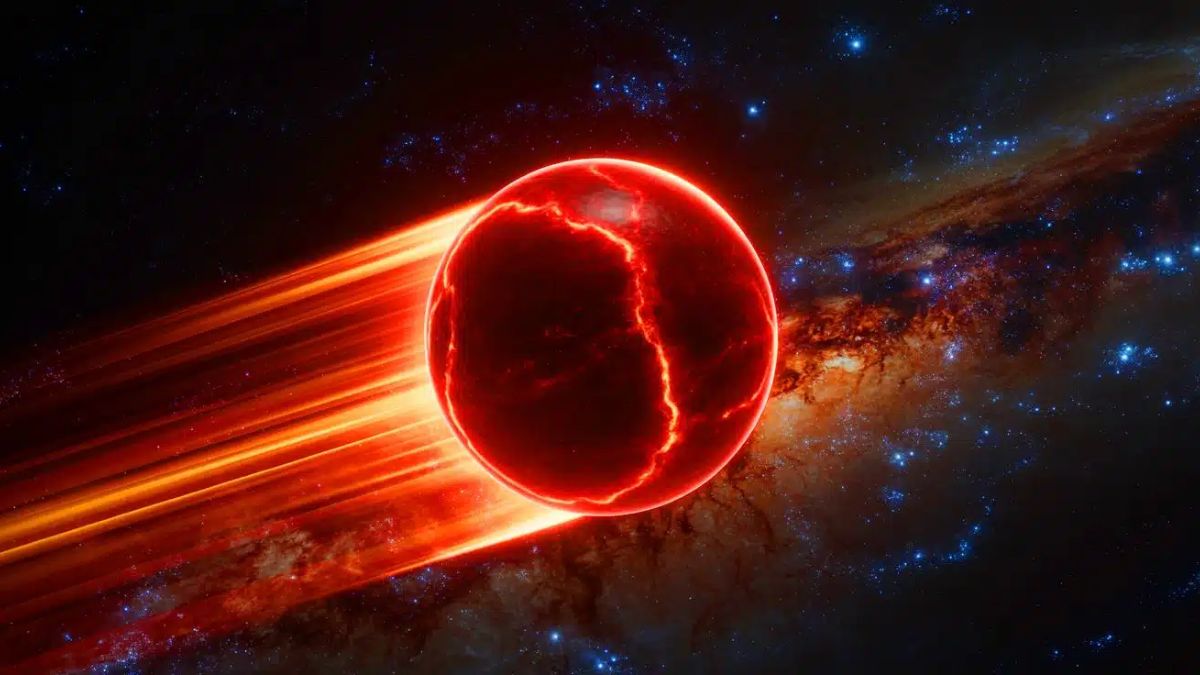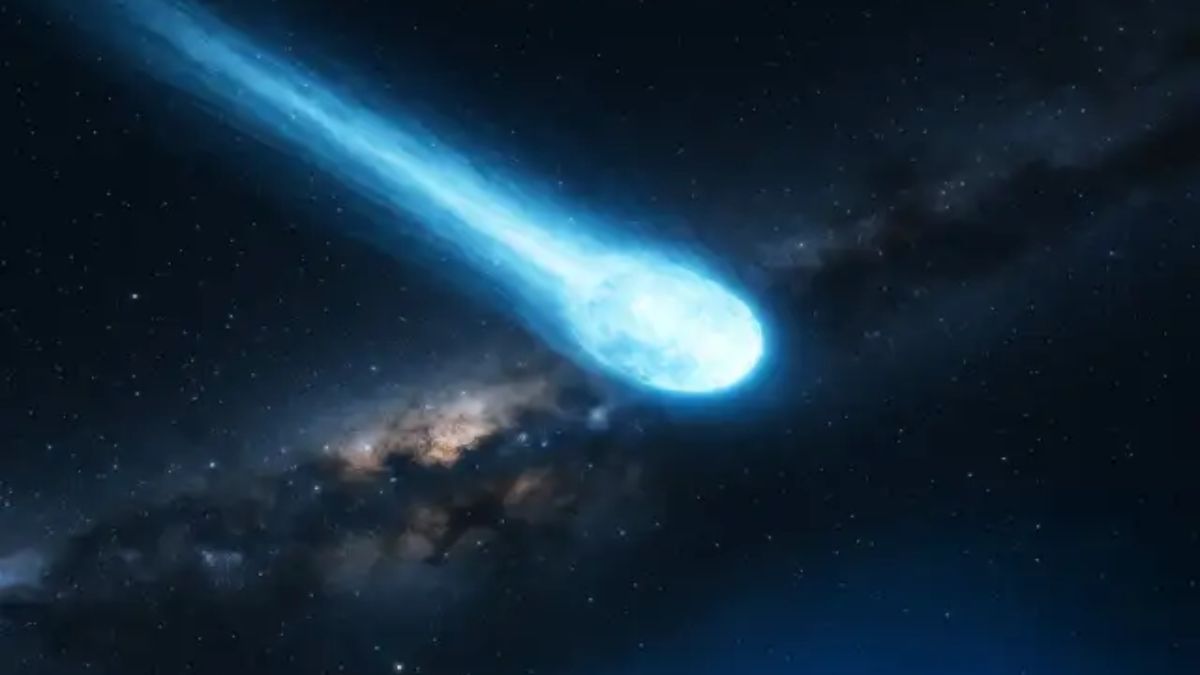Space often seems calm and timeless. We look up and see stars quietly twinkling, galaxies swirling ever so slowly—it’s easy to believe the universe is a peaceful, static place. But every now and then, something shatters that stillness.
Recently, NASA announced the discovery of a mysterious sphere traveling at nearly one million miles per hour—and it’s leaving our galaxy behind. The kicker? This wasn’t just spotted by scientists in labs, but by everyday volunteers with a sharp eye and a passion for space.
Discovery
Let’s start with how it all began. NASA runs a citizen science project called Backyard Worlds: Planet 9. It gives volunteers the chance to comb through old space images, looking for odd movements or hidden celestial bodies. In this case, three longtime volunteers—Martin Kabatnik, Thomas P. Bickle, and Dan Caselden—noticed something odd in infrared images from the WISE (later NEOWISE) mission.
It wasn’t much at first glance—just a faint red glow. But it was moving. Fast. Once its velocity was calculated, scientists realized this wasn’t an ordinary object. It was speeding through space at around one million miles per hour. That’s when it got its official name: CWISE J124909.08+362116.0—or CWISE J1249 for short.
Mystery
So, what exactly is this thing? It’s not quite a planet, but it’s not a full-fledged star either. CWISE J1249 is estimated to be about 30,000 times the mass of Earth. That’s roughly 8% the mass of our Sun—too heavy to be a planet, but too light to sustain the nuclear fusion that powers stars.
This makes it likely a brown dwarf, which is sort of a “failed star.” But even among brown dwarfs, J1249 is unusual. Its infrared signature, metallicity, and composition don’t quite match the typical profiles. Using the Keck Observatory in Hawaii, astronomers found that it has significantly lower levels of iron and metals than other known brown dwarfs. That tells us something big: it could be one of the oldest objects in our galaxy.
Fossil
If that’s true, then this object is what scientists call a “cosmic fossil.” Basically, it’s a relic from the early days of the Milky Way, possibly dating back to when the galaxy was still forming. Most modern stars and planets have a fair amount of metals—elements heavier than hydrogen and helium—because they’re born from material recycled by older generations of stars.
But J1249? It’s different. Its low metal content means it could have formed before the galaxy had time to produce and scatter those heavy elements. Studying it could help astronomers piece together what the Milky Way looked like billions of years ago.
Speed
Now, let’s talk about speed. CWISE J1249 isn’t just fast—it’s blazing through the galaxy so quickly that it’ll eventually escape the Milky Way entirely. For comparison, the Parker Solar Probe—currently the fastest human-made object—moves at about 430,000 miles per hour. J1249? Over double that, flying through space like it was launched from a cosmic cannon.
This raises a big question: what gave it that kind of kick?
Theories
There are two main theories. The first is the supernova kick. This idea suggests J1249 was part of a binary system, orbiting a white dwarf star. If that star exploded in a supernova, the blast could have thrown J1249 out at insane speeds.
The second theory is the black hole slingshot. In this scenario, J1249 passed near a pair of black holes inside a dense star cluster. If it got close enough without falling in, the black holes could’ve whipped it around and flung it out—similar to how we use gravitational assists to accelerate space probes.
Dr. Darren Baskill puts it simply: “One way to reach such extreme speeds is to fall toward an object… and miss.” That’s gravity at its wildest.
Impact
So why does this matter? Beyond the sheer cool factor of discovering a rogue object flying out of the galaxy, J1249 could help us understand some big cosmic questions. Like how galaxies evolve, how the first stars formed, and how different types of objects are distributed across space.
It also shows the power of citizen science. The discovery didn’t come from billion-dollar satellites or deep space probes—but from backyard astronomers and open data. It’s a reminder that sometimes, the next big discovery might come from your own screen.
Table
| Feature | CWISE J1249 |
|---|---|
| Speed | ~1 million mph |
| Mass | ~30,000x Earth, ~8% of the Sun |
| Composition | Very low metal content |
| Type | Likely a brown dwarf |
| Discovery Team | Citizen scientists + NASA |
| Escaping Galaxy | Yes, over millions of years |
This strange red blur turned out to be one of the galaxy’s most intriguing runaways. CWISE J1249 isn’t just moving fast—it’s carrying secrets from the earliest days of the universe. And thanks to a handful of sharp-eyed volunteers, the rest of us now get to marvel at a mystery that defies categorization, breaks speed records, and possibly rewrites what we know about our galactic neighborhood.
FAQs
What is CWISE J1249?
It’s a mysterious high-speed brown dwarf escaping our galaxy.
How fast is J1249 moving?
About 1 million miles per hour.
Who discovered CWISE J1249?
Citizen scientists using NASA’s Backyard Worlds project.
Why is J1249 important?
It may be a cosmic fossil from the galaxy’s early days.
What caused its speed?
Possibly a supernova or black hole slingshot effect.

















